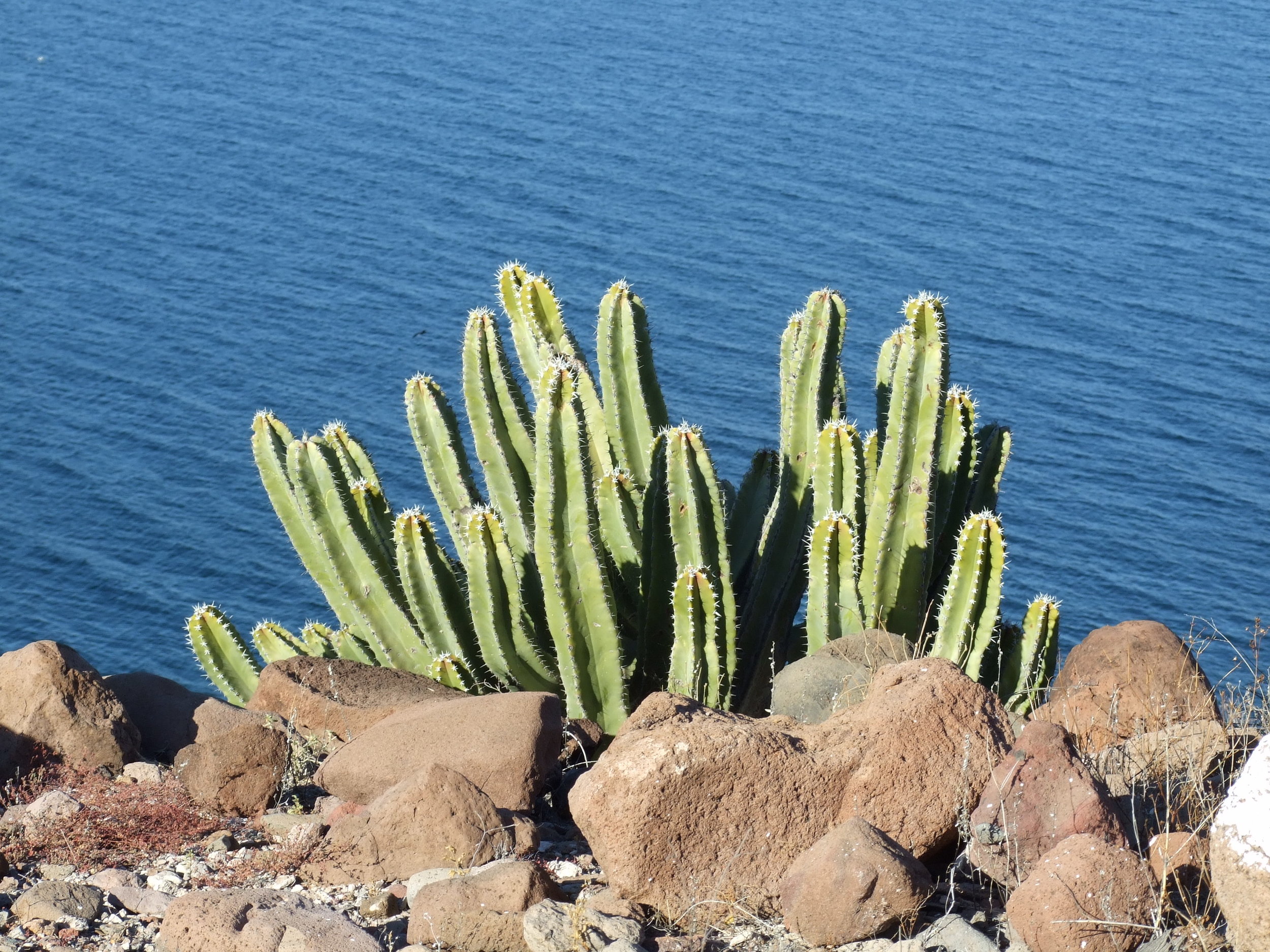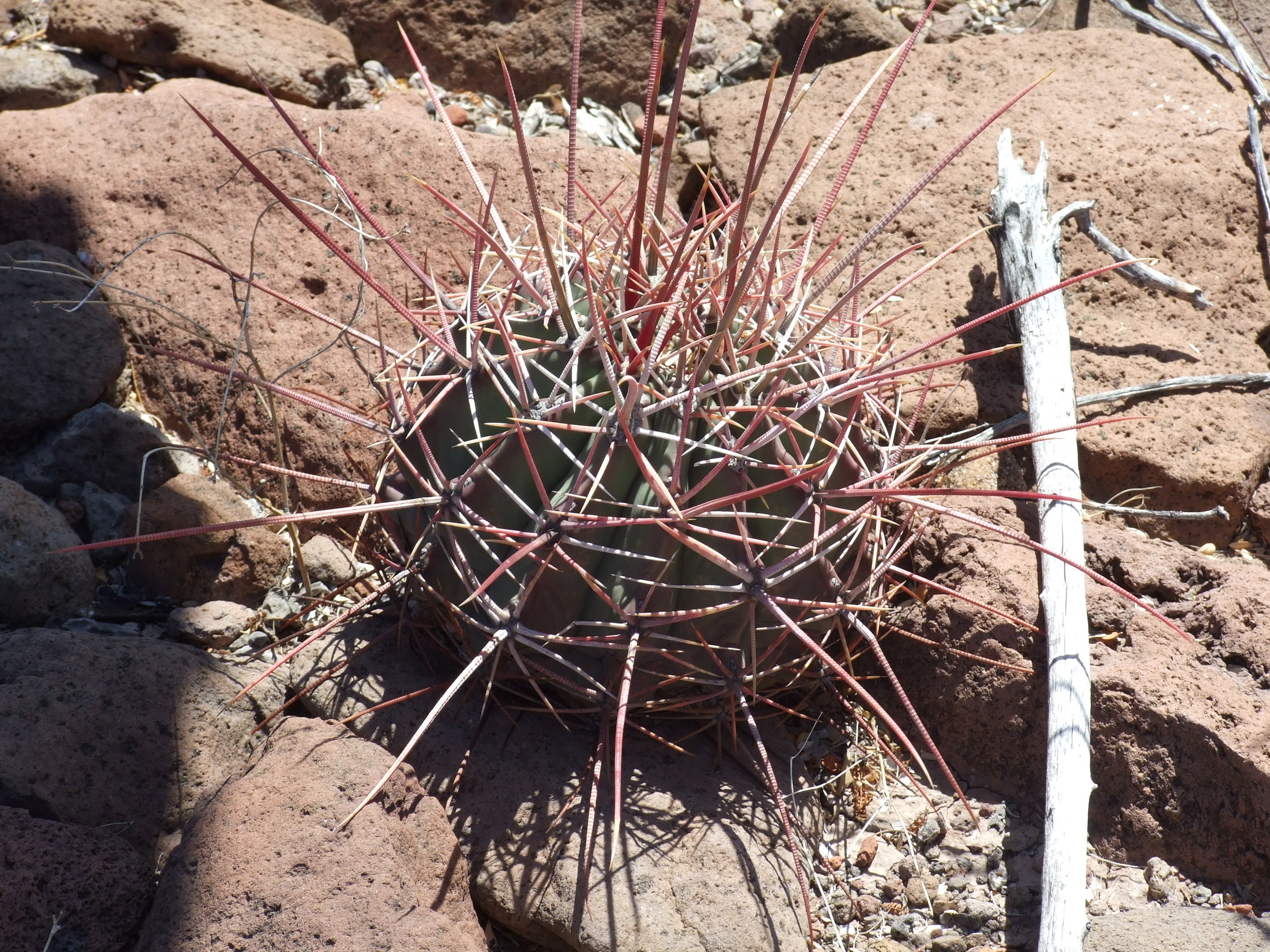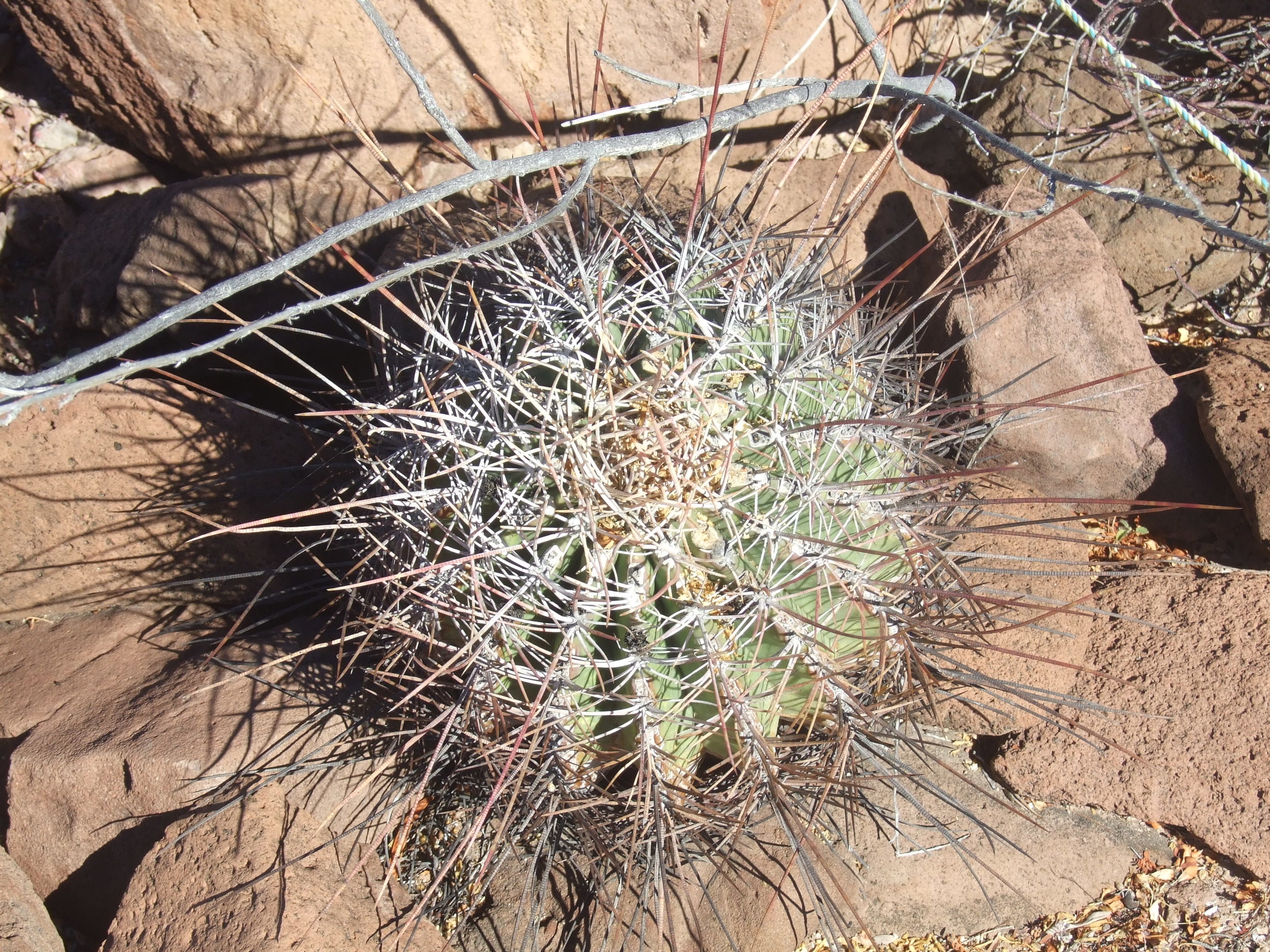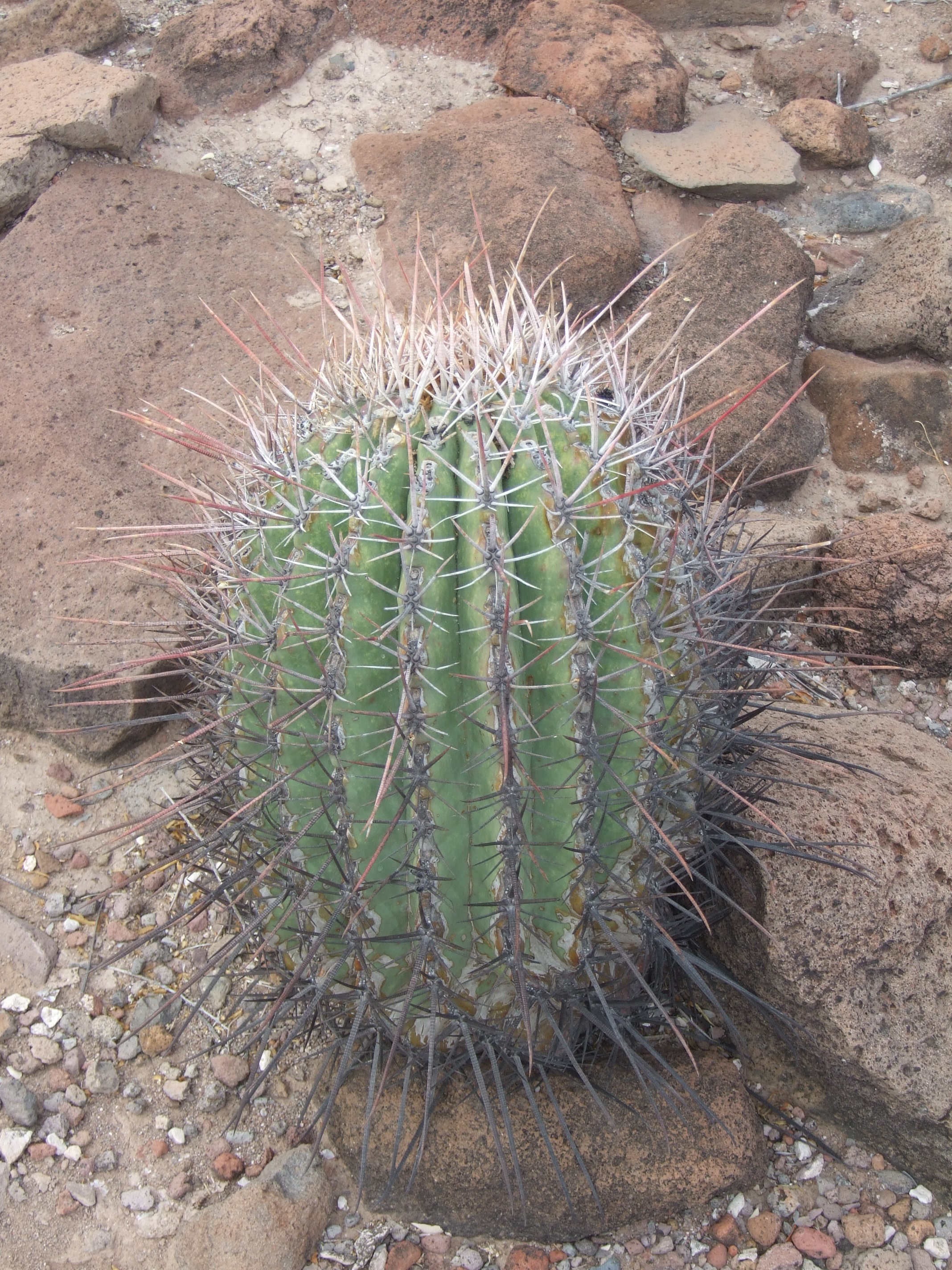The Pitaya Dulce is another common cactus on the Baja peninsula. The nocturnal flowers are cream colored and bloom at night, closing the following morning. The Cactus bears an excellent spiny fruit about the size of a tennis ball containing sweet, pink flesh, with a flavor reminiscent of watermelon. The fruit pulp can be eaten fresh, or dried in the sun for future consumption. My Baja California field guide by Norman Roberts includes these interesting anecdotes concerning the Pitaya Dulce: That "Missionaries' records indicate the natives were generally hungry except during Pitaya season. Then they gorged on this wild harvest, spending the entire season in a state of euphoria." And that "the Natives defecated at a particular spot on the trail, later gathering their own dried feces to collect the tiny black Pitaya seeds that had passed through their intestinal tract undigested. These seeds were then ground into a meal to be eaten as a pozole. This was called "the second Pitaya harvest". The missionaries were thoroughly disgusted with this harvest and castigated the Aborigines for it." Of course, the missionaries never successfully survived for thosuands of years in this seeminly inhospitable landscape, which doesn't give them much room for criticizing the native inhbitants for their methods of adaptation.
The book then includes a note about the superb daiquiris that can be made from the Pitaya fruit.
The flesh of the Pitaya is traditionally used as snake-bite medicine, applied directly to the afflicted site.




